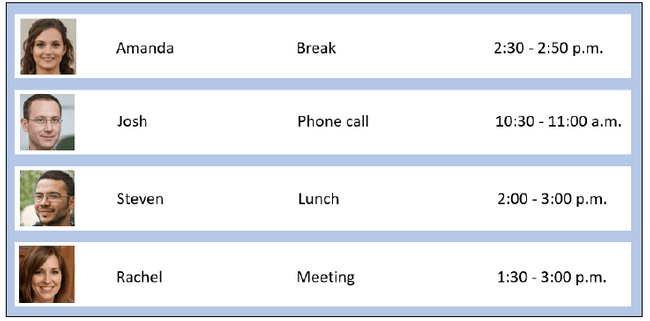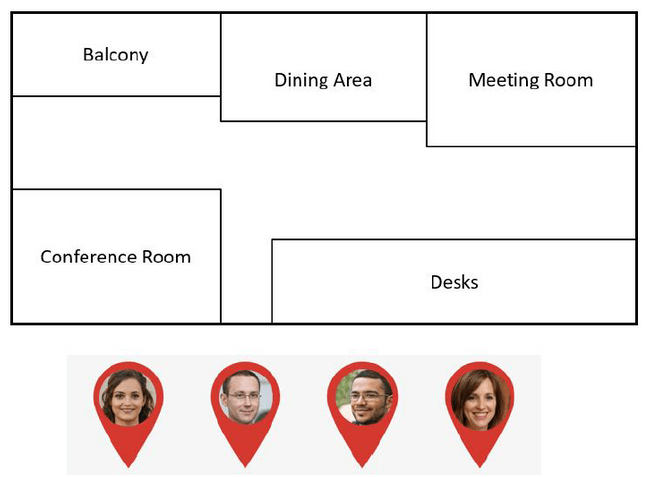 SHL Deductive Practice Test - All The Details You Must Know To Pass (2025)
SHL Deductive Practice Test - All The Details You Must Know To Pass (2025)
The SHL Deductive Reasoning Test is a pre-employment assessment designed to evaluate a candidate's ability to draw specific conclusions from general principles or premises. It involves applying established rules or principles to reach a specific logical conclusion.
The test requires candidates to answer each question within a significant time limit, emphasising the importance of adequate preparation and practice to succeed in the actual test.
To ensure you are prepared for SHL Deductive Test, we have developed a dedicated PrepPack that will ensure you will be fully prepared and confident on test day. The PrepPack includes:
- SHL Deductive Full Test Simulations & Study Guides - allowing you to practice the actual test's time constraints, format, and types of questions you will encounter on the actual test and identify your weak areas. Including both interactive and non-interactive SHL Deductive simulation tests.
- Additional Inductive Practice Tests - covering all the topics and sections you'll face in the SHL Exam. The practice tests will allow you to thoroughly practice your weak points, as revealed by the full test simulation.
- Dedicated Video Tutorials & Study Guide - enabling a deep understanding of the theory behind each test section and the most optimal techniques to answer the questions.
What Are Deductive Reasoning Tests?
Deductive reasoning tests evaluate your ability to take general ideas that are considered true and reach a specific, logical conclusion.
Let’s see what deduction looks like in one of its simplest examples:
- All dogs are mammals.
- All mammals are warm-blooded.
Using deductive reasoning, you can conclude that all dogs are warm-blooded.
Deductive Reasoning VS Inductive Reasoning
While deductive reasoning uses general statements to reach specific conclusions, inductive reasoning uses specific observations to reach a general conclusion.
Now:
Many employers value employees with strong deductive and logical skills. That’s why they use assessment tests, such as SHL’s ones, to ensure they hire candidates with these abilities.
What Is the SHL Deductive Reasoning Test?
The SHL Deductive Reasoning test is a pre-employment assessment that measures logical thinking skills. Included are questions such as identifying the strengths and weaknesses of arguments, analyzing scenarios, and drawing conclusions from data. Additionally, SHl has devised three versions, including an interactive and two non-interactive multiple-choice format versions.
Many companies, like Rolls Royce, include the SHL Deductive Reasoning Test as an essential part of their recruitment process.
What to Expect on the SHL Deductive Test?
The version of the SHL deductive test you'll get will depend on the hiring company. Each version differs in its question types, time limits, and difficulty levels.
Below, we have provided an overview of each test version plus some sample questions, so you start to get a feel for the test.
SHL Verify G+ Deductive Reasoning Test (Interactive)
Number of questions: 12
Time limit: 18 minutes
Unique instructions: the instructions will specifically say “…an activity-based test that allows you to drag, drop, and interact…”
The SHL Interactive Deductive Reasoning test is a new assessment that's completely different from the classic multiple-choice version.
On this test, you’ll have questions such as scheduling an interactive calendar, deducing the ranking of people based on different criteria, arranging meeting rooms, and more.
That’s why this version is considered more difficult, and each question takes longer to answer.
(Nevertheless, you have only 1.5 minutes per question)
To get a better understanding of what makes this interactive version so unique, check out the following example of a question type you’ll likely see on the test:
SHL Interactive Deductive Reasoning Sample Question
Office Schedule

When there isn’t a scheduled activity, workers are at their desks. Phone calls are made in the conference room. Lunch is eaten in the dining area, and breaks are taken on the balcony.
Place each worker in the correct room at 2:30 p.m.
*Note: on the real test, you’ll need to drag the worker’s location pin and drop it in the correct place.

SHL Verify G+ Deductive Reasoning Test (Non-Interactive)
Number of questions: 18
Time limit: 20 minutes
Unique instructions: “After each question, there are four or five response options.” And “Click on the answer…” indicates it’s not an interactive assessment.
The non-interactive SHL Deductive reasoning test is a multiple-choice test with five responses to choose from and only one correct answer to each question.
You’ll have three types of questions on this test:
- Paragraph or statements followed by the question - “which statement must / cannot be true?”
- A paragraph with specific details followed by the question - “which assumption underlies the above argument?”
- Tables loaded with details and numbers followed by a detailed question about them.
The following is an example for the third question type:
SHL Non-interactive Deductive Reasoning Test Example

Note: codes are always listed first by the Calls pack, then Text messages pack, Multimedia messages pack, and Data pack.
Which of the following series of codes is incorrect?
SHL CEB Deductive Reasoning Test
Number of questions: 18
Time limit: 20 minutes
The SHL Verify CEB Deductive test is easier to recognise as you’ll CEB’s logo on the top left corner of the test’s opening screen. As of 2023, only several companies use this version, as most other companies that use SHL’s assessments shifted to the newer interactive and non-interactive versions.
This version is pretty similar to the non-interactive one in terms of the deductive skills under examination, however, its format and graphics look more outdated.
Check out the following sample question that has one of the most common question formats:
SHL CEB Deductive Reasoning Sample Question
- There are no dancers that aren't slim.
- There are no singers that aren't dancers.
Which statement must be true?
How to Pass the SHL Deductive Reasoning Test?
Sitting the SHL Deductive Reasoning test without any prior preparation can be hard.
Even if you have solid deductive skills, it takes time to get used to the question types. Especially if you’re taking the interactive version, which is the complete opposite of the classic multiple-choice tests you’re used to.
Problem is, you don’t have time to get comfortable with the unique question types if you decide to start the test without prior prep. Except for a few warmup sample questions, you need to quickly dive into the cold water and start answering questions.
So, the safest way to ensure you pass the SHL Deductive test is by following a thorough practice plan beforehand (preferably tailored to your specific test version).
There are three options available for that right now:
- SHL Direct’s practice test
- Our free SHL practice test
- JobTestPrep’s accurate SHL preparation pack
Why Practising Just Using SHL Direct Might Not Be Enough?
Your SHL assessment invitation email usually includes a link to SHL Direct, SHL’s practice site containing several sample questions and free practice tests.
That said, there are a few problems with that:
- The invitation email doesn’t tell you which SHL version you should practise for (interactive or non-interactive - which differ greatly).
- The score report you get at the end (only for the non-interactive version) doesn’t say which questions you got right or wrong, so you can’t tell what areas to focus on. Also, you don’t get any solutions, feedback, or explanations, thus you’re unable to learn from your mistakes.
- SHL Direct’s practice tests include only a small fraction of the actual question types. Additionally, some of the questions’ difficulty level is easier than the real test. SHL even mentions that on their page by saying that the practice tests’ level may not reflect the real thing.
And this leads us to the next option...
JobTestPrep’s SHL Deductive Reasoning Preparation
JobTestPrep is currently the only test prep company that offers thorough practice for SHL’s interactive test version. During the past 7 years, we've prepared more than 24,000 candidates for their SHL Assessments!
We constantly update our PrepPacks to provide the most accurate prep.
Our PrepPack includes:
✔ Dozens of SHL-style Deductive practice tests covering all three test versions (interactive, non-interactive, CEB).
✔ Step-by-step solutions for every practice question, ensuring you understand the logic behind every question and that you’ll know how to answer them on the real test.
✔ Realistic difficulty levels and time limits so you’ll get used to the actual tests’ conditions and their tight time limits.
✔ Extra practice drills to give you an additional boost and ensure that you won’t only pass the test, but also get to the highest percentiles.
SHL Deductive Reasoning Scores Explained
After you finish the SHL deductive assessment, you’ll receive a score report named “Candidate Assessment Report.”
The scores you see on this report, as well as SHL’s general scoring, are comparative. This means the scores are compared to a large group of candidates who previously took the same test.
Your test results range from A to E, as you can see in the illustration below:

The higher your score is, the closer you’ll be to group “A”. And it’s safe to say that candidates who score in groups “A” and “B” are likely to pass the test.
So, even if the scoring system is comparative to other test-takers, you should still strive to score as high as possible.
Create Your Custom Assessment Prep Kit
Job-seeking can be a long and frustrating process, often taking months and involving numerous pre-employment tests and interviews. To guide you through it, we offer a Premium Membership.
Choose 3 Preparation Packs at 50% discount for 1, 3, or 6 months.
More Free Practice
We at JobTestPrep find the assessment tests world highly diverse and fascinating. If you are looking to deepen your knowledge in the aptitude tests world, or you want some extra practice before your test, we've got you covered!
Check out these fantastic free practice tests (all are completely free):
Free Aptitude Test | Free Psychometric Test | Free Numerical Reasoning Test | Free Verbal Reasoning Test | Free Cognitive Test | Free Critical Thinking Test | Free Abstract Reasoning Test | Free Spatial Reasoning Tets | Free Personality Test | Free Inductive Test | Free Mechanical Reasoning Test


